The Vendor Portal is a great tool that allows you to streamline purchasing processes, and also get the vendor to update information pertaining to them. Not only does this reduce the workload on the purchasing group, but it also improves data accuracy since there is no chance for miskeying information as its being transcribed.

In this worked example, we will show how you can use vendor management and the Request for Quotation function to streamline the vendor bidding process.
Step 1: Create A New Request For Quotation
Requests for quotations can be found in the Procurement and Sourcing area.
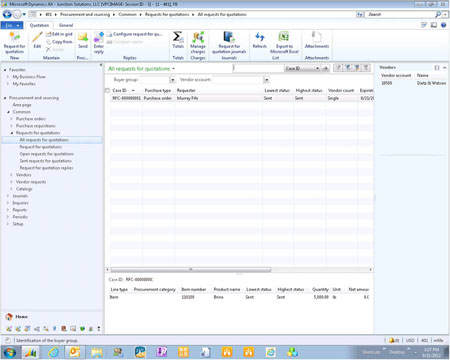
When you create a new RFQ you are able to create either Purchase Orders, or Purchase agreements.
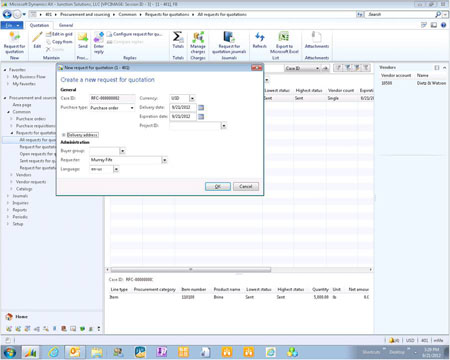
After creating the initial RFQ you can specify the default information for the purchase Order like the Buyer Group etc.
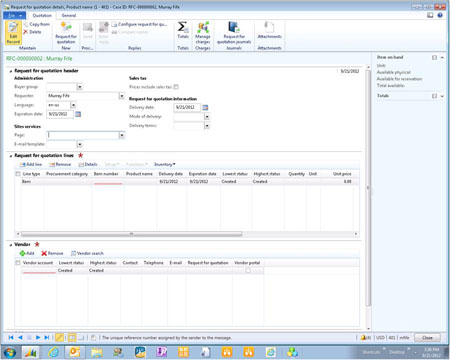
In the lines area you are able to list all of the items that you would like to be on the RFQ.
Note: If you want you can specify a BOM based product here and there is an option that will automatically explode out all of the components automatically.
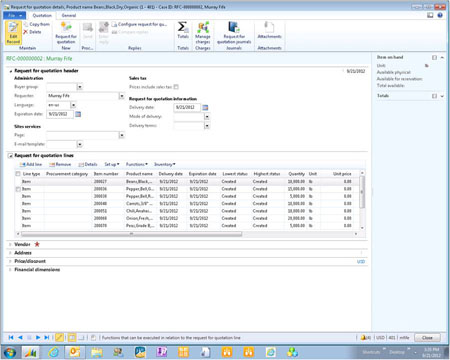
The next step is to select the vendors that you want to send this request to. You can enter them in one by one if you like.
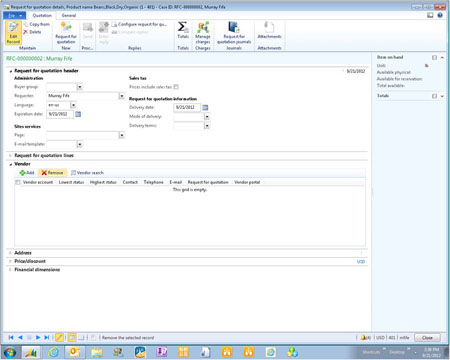
Or you can use the search function to run a query against the vendor list and have the system select the vendors for you.
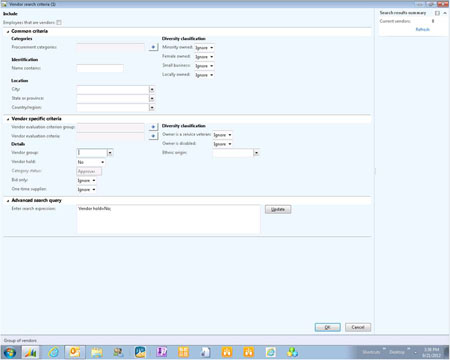
If you have your customer broken out into groups then this becomes a simple selection.
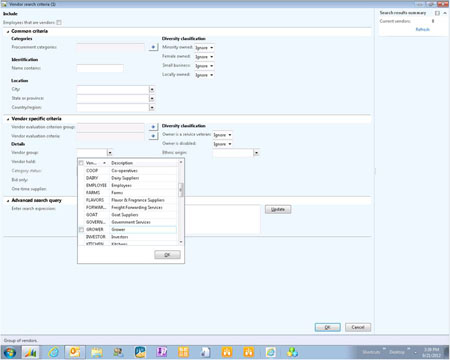
You can delete lines from the returned search if you like to refine the distribution list.
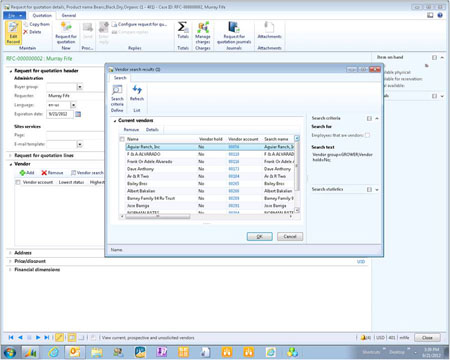
Within the RFQ, you will also be able to see if the vendors that you are delivering the request to have access to the vendor portal or not.
If they don’t have access, then make sure that you set them up. They don’t cost you any licenses in order to enable them.
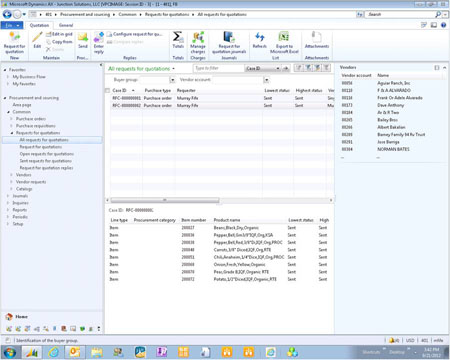
Step 2: Vendors Respond To The Request For Quotation
After the vendor receives notification that there is a RFQ for them to respond to, they can log into their portal and review the request.
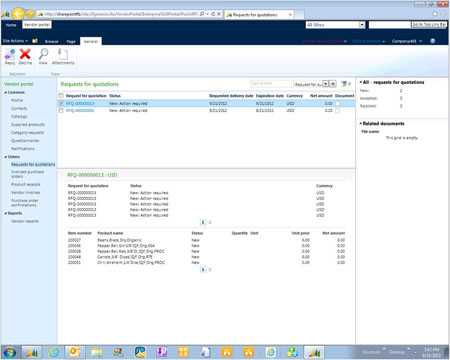
If they want to respond to the request then they just have to open it up and start updating their reply.
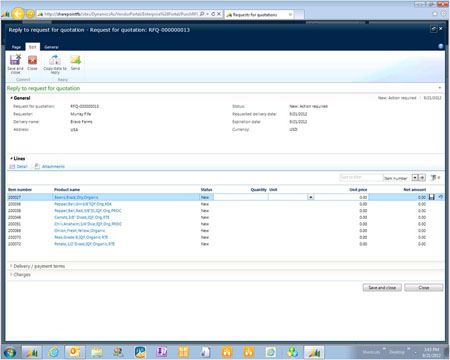
All done.
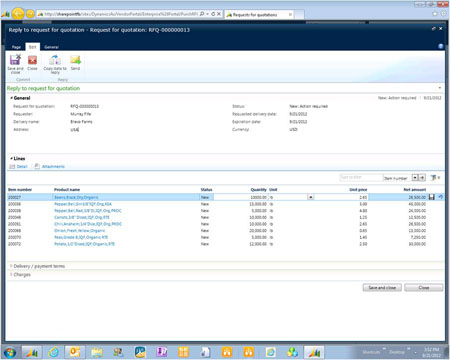
Now that they have updated all of the lines, and deleted the items that they do not want to respond to they just have to click reply.
Note: If the supplier has any additional documentation that they want to attach to the RFQ, then they can do that from this screen at any time by clicking on the “Attachments” button.
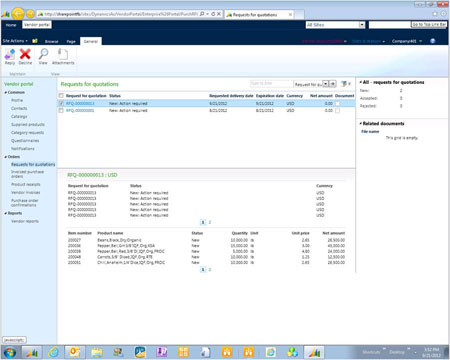
After one final review step in the process they just have to click the “Send” button, and it will be returned to you.
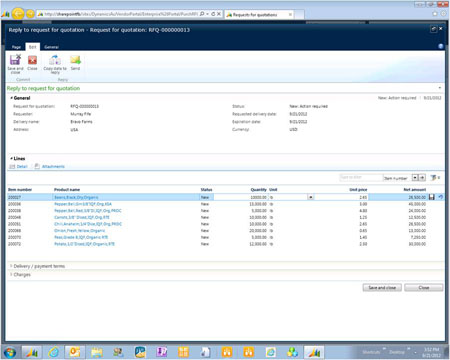
Done.
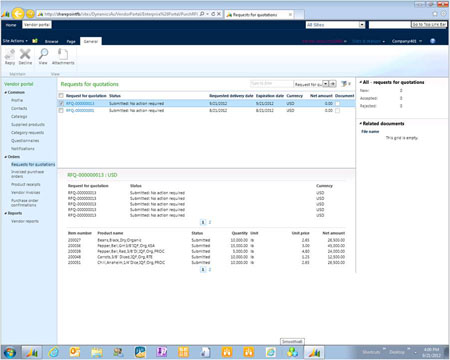
Step 3: Review New Request For Quotation Responses & Process Them
Now when you look at the replies, the ones that have been updated will be marked as “Received”.
Tip: If you create a filter for just the received items, and then add them to your role center as a cue then you will always be on top of the new responses as they come in.
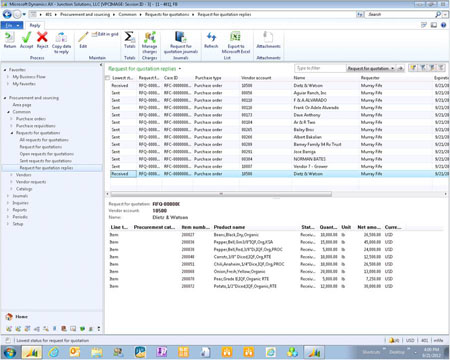
Now we can view the response and if we want to accept it then we click on the “Select” menu item.
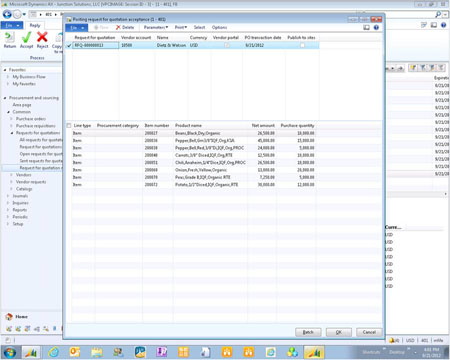
That will convert the RFQ into a Purchase Order for us.
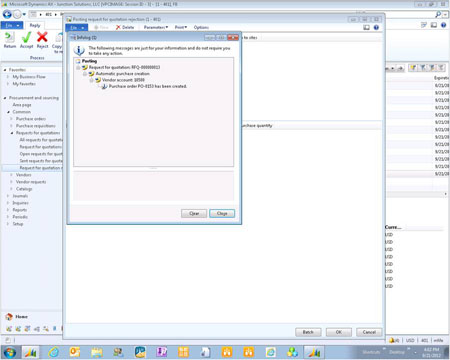
Finished: Look Mom, No Rekeying
No cutting and pasting for quotes into the system ever again. Let the vendors do the data entry for you.
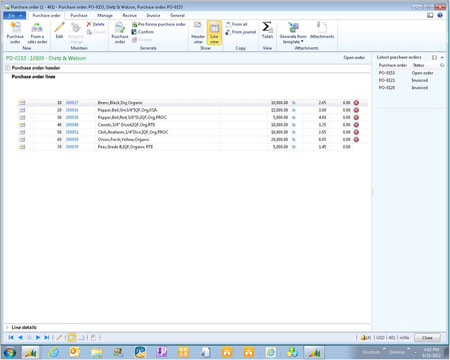
Very Cool!

 RSMUS.com
RSMUS.com